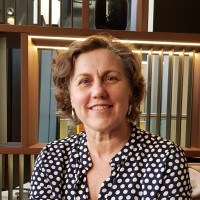By Annabelle Kay
Last week, I had the privilege of representing Desert Scientific Software in Yokohama at BioJapan 2025, proudly showcasing Proasis at the Australian pavilion run by Austrade.
What struck me most while walking the halls of Pacifico Yokohama, was how the best science in the room reflected something the 2025 Nobel Prize in Chemistry acknowledged: breakthrough innovation rarely happens in isolation. It thrives when researchers share insights, build on each other’s work, and combine complementary expertise.
That cross-Pacific collaboration encapsulates what’s happening in biopharma right now: the future of drug discovery is increasingly global, increasingly Asian, and increasingly dependent on our ability to harness structural biology at scale.
The energy around antibody therapeutics and biologics was the dominant theme of the exhibition. The data speaks volumes – the global antibody therapeutics market is projected to exceed $500 billion by 2030, with Japan and China rapidly emerging as innovation leaders.
Amid the excitement, a consistent challenge was apparent in conversations with researchers and company leaders: as the complexity of biologics R&D grows, so does the complexity of biologics data management.
Today, we have unprecedented structural intelligence. Cryo-EM is resolving large-scale antibody-antigen complexes at near-atomic resolution, while AlphaFold 3 has expanded the universe of predicted assemblies.
But many teams are still piecing together their data manually, comparing structures one by one, tracking CDR variations in spreadsheets, and juggling information scattered across multiple systems and CRO partners.
It’s a common question at events like BioJapan: “How can software tools help manage biologics research data more efficiently?”
The answer is clear. When researchers spend time consolidating data instead of interpreting it, innovation slows. In a race where time-to-clinic can define commercial success, this is an enormous bottleneck.
As one delegate put it, “It’s like having access to unprecedented structural intelligence, but viewing it through a microscope, one structure at a time.”
What particularly impressed me about BioJapan was the sophistication of the research questions being asked. Asian biotech teams aren’t merely adopting Western methods – they’re pushing the frontier of rational antibody design.
They’re asking the critical questions:
These are exactly the problems that structure-based design, powered by unified biologics software platforms like Proasis, can solve.
When researchers can overlay dozens of antibody-antigen complexes, identify conserved epitopes, and flag design risks before they become preclinical failures, they can compress years of work into months.
It’s why so many in the field are now searching for “best software for biologics drug discovery” – because the tools themselves are becoming a differentiator in innovation.
The case studies coming from Proasis users tell a consistent story of measurable transformation:
These are not minor incremental gains; they’re the difference between leading the market and missing the window.
Asia’s biologics boom is undeniable, but the winners will be those who can operationalise structural data, turning structural insights into faster, smarter decisions.
The researchers and organisations doing this effectively aren’t succeeding just because they work harder, but because they have better tools for biologics R&D, tools that integrate, visualise and interpret structural data across global teams.
This is what Proasis is built to do. It transforms molecular modelling and structure analysis from a manual, siloed process into a collaborative, data-driven workflow.
By consolidating public PDB structures, proprietary experimental structure data, and computational predictions into a unified platform, it enables real-time collaboration across departments, organisations, and borders. Researchers can focus on scientific creativity rather than data logistics.
To the researchers, founders, and teams we met in Yokohama: thank you for the conversations, the curiosity and the collaboration. Asia’s biologics story is just now being written, and these first chapters are very exciting.
We’re looking forward to building the next generation of antibody therapeutics together.

Connect with Annabelle on LinkedIn to find out more.

Ищешь площадку, где азарт начинается с первых секунд? Вавада предлагает стабильный вход, турниры, быстрые выплаты и большой выбор популярных слотов для динамичной игры.
.